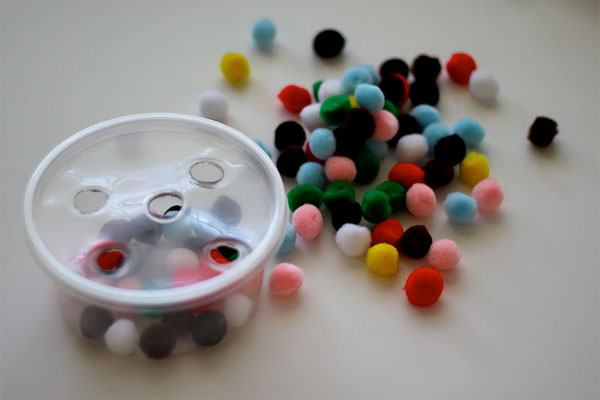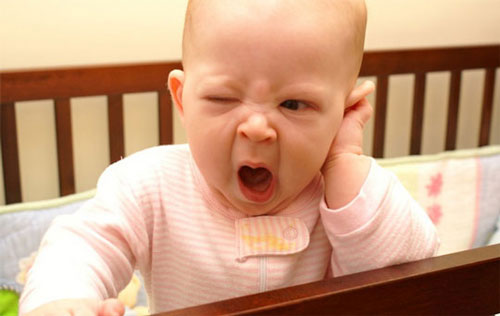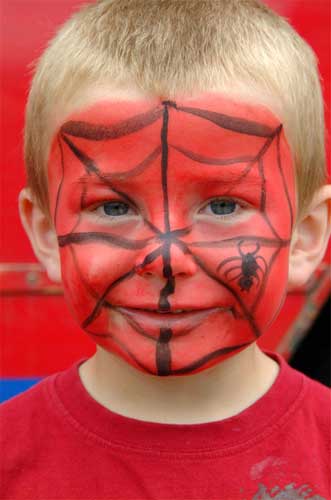You can spend a bundle on toys for your toddler, but he may be happiest when playing with a bunch of keys. "My child has so many expensive toys, but he is happiest playing with an old dandiya stick!" says Preethi, mother of 2 year old Shreyan. Preethi is not alone. Children today are faced with a wonderful variety of toys and games ranging from the expensive to the not so expensive in any subject area. As parents we try to give our children the best toys available and hope that by doing so, we are providing them with valuable education and a learning experience. But do children really need such expensive toys? No doubt they do have their benefits, but it is possible to achieve the same benefits by making simple toys at home. In this articleBoxesBottlesHomemade clayBoxes Ever watched a toddler play with a large cardboard box? He can have hours of fun with it trying to crawl through it, trying to make it stand, trying to open and close it or even simple trying to tear it. These boxes are usually discarded after use, so why not allow your little one to have a good time with it? Make sure you clean and dust out the carboard box first. Collect small boxes of different sizes, and give them to your children to build towers or trains. If these small boxes are not sturdy, stuff them with crushed newspaper so they do not collapse easily. Your child can pile the boxes one on top of the other, trying to work out how to make a high tower. Playing with boxes helps stimulate imagination. You child will also and discover proportion and mathematical relationships as he builds bridges and towers. Bottles Avoid throwing away soft drink bottles. Collect about 6-8 similar sized ones and you can use them as skittles to play bowling and can organise your own toddler bowling contest for children in your neighbourhood. If you have a collection of different sized bottles, remove the caps and have your child match them to the right bottle. This is an old fashioned way of teaching your children sorting and matching that form a basis for learning mathematics a few years hence. Homemade clay Which child does not like to dig his hands into a solid mass of cooking dough? Give your child a firm ball dough to play with while you work in the kitchen. Encourage him to make different objects on his own. A board and a rolling pin will make him happy to play cook. Moulding clay or dough helps your child develop fine motor skills and hand-eye coordination that are so necessary for ease of reading and writing. If you want to be even more creative, make your own clay. Mix 1 cup of water, 2 cups of flour and 1 cup of salt, and knead for about two minutes until it forms a smooth dough. Your child can then mould the dough into different creations. Once you are done, place the sculptures on a baking tray and bake for about 30 minutes at 120 degrees centigrade. Take them out and cool. You could then paint them. Go ahead and spend a lazy afternoon making cute clay characters or toys. These simple toys are not just inexpensive, but they also spur your and your childs imagination.
You can spend a bundle on toys for your toddler, but he may be happiest when playing with a bunch of keys. "My child has so many expensive toys, but he is happiest playing with an old 'dandiya stick!" says Preethi, mother of 2 year old Shreyan. Preethi is not alone. Children today are faced with a wonderful variety of toys and games ranging from the expensive to the not so expensive in any subject area. As parents we try to give our children the best toys available and hope that by doing so, we are providing them with valuable education and a learning experience. But do children really need such expensive toys? No doubt they do have their benefits, but it is possible to achieve the same benefits by making simple toys at home.
Boxes
Ever watched a toddler play with a large cardboard box? He can have hours of fun with it trying to crawl through it, trying to make it stand, trying to open and close it or even simple trying to tear it. These boxes are usually discarded after use, so why not allow your little one to have a good time with it? Make sure you clean and dust out the carboard box first.
Collect small boxes of different sizes, and give them to your children to build towers or trains. If these small boxes are not sturdy, stuff them with crushed newspaper so they do not collapse easily. Your child can pile the boxes one on top of the other, trying to work out how to make a high tower. Playing with boxes helps stimulate imagination. You child will also and discover proportion and mathematical relationships as he builds bridges and towers.
Bottles
Avoid throwing away soft drink bottles. Collect about 6-8 similar sized ones and you can use them as skittles to play bowling and can organise your own toddler bowling contest for children in your neighbourhood.
If you have a collection of different sized bottles, remove the caps and have your child match them to the right bottle. This is an old fashioned way of teaching your children sorting and matching that form a basis for learning mathematics a few years hence.
Homemade clay
Which child does not like to dig his hands into a solid mass of cooking dough? Give your child a firm ball dough to play with while you work in the kitchen. Encourage him to make different objects on his own. A board and a rolling pin will make him happy to play 'cook'. Moulding clay or dough helps your child develop fine motor skills and hand-eye coordination that are so necessary for ease of reading and writing.
If you want to be even more creative, make your own clay. Mix 1 cup of water, 2 cups of flour and 1 cup of salt, and knead for about two minutes until it forms a smooth dough. Your child can then mould the dough into different creations. Once you are done, place the 'sculptures' on a baking tray and bake for about 30 minutes at 120 degrees centigrade. Take them out and cool. You could then paint them. Go ahead and spend a lazy afternoon making cute clay characters or toys.
These simple toys are not just inexpensive, but they also spur your and your child's imagination.































